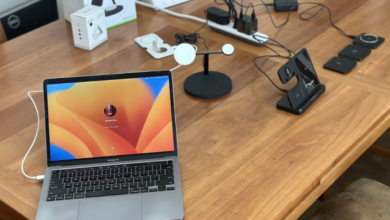Microsoft Azure Remote Desktop Services: Secure, Scalable, and Seamless Workforce Mobility

In a world where flexibility, security, and scalability are critical for business success, Remote Desktop Services (RDS) have become a cornerstone for organizations seeking reliable access to enterprise applications and desktops from anywhere. As workforces become more distributed and hybrid work models gain traction, Microsoft Azure Remote Desktop Services (Azure RDS) emerges as a powerful solution that offers centralized management, secure access, and scalable infrastructure.
Backed by the robust capabilities of Azure’s global infrastructure, Azure RDS provides an effective platform to deliver Windows desktops and apps to users across locations without compromising performance or security. Enterprises leveraging Azure RDS enjoy reduced operational costs, streamlined IT management, and a vastly improved user experience — all key benefits of working with a leading Microsoft Azure cloud service provider.
This article explores how Microsoft Azure Remote Desktop Services work, their benefits, use cases, and best practices for implementation in today’s digitally-driven workplace.
What Is Microsoft Azure Remote Desktop Services?
Microsoft Azure Remote Desktop Services (RDS), also referred to as Azure Virtual Desktop (AVD), is a cloud-based service that enables organizations to deliver Windows desktops and remote applications to any device over a secure internet connection.
Unlike traditional RDS deployments that rely on on-premises servers, Azure RDS harnesses the scalability and reliability of the Azure cloud. This means businesses can provide users with access to applications and data without maintaining complex hardware or worrying about system uptime.
With support for multi-session Windows 10/11 environments, Microsoft 365 integration, and enhanced security, Azure RDS has evolved from a simple virtualization platform into a full-scale desktop-as-a-service (DaaS) solution.
Key Components of Azure Remote Desktop Services
When delivered through Azure, Remote Desktop Services include the following key components:
- Host Pools – Collections of Azure virtual machines that host the Windows desktops and applications.
- Session Hosts – Virtual machines that users connect to.
- Application Groups – Logical groupings of applications assigned to users.
- User Profile Containers – Store user-specific settings and files, maintaining the same experience across sessions.
- Connection Broker and Gateway – Manage incoming requests and route them securely to the appropriate host.
These elements are orchestrated in the Azure portal, with complete integration into Active Directory, Microsoft Intune, and other enterprise tools for centralized access management and policy enforcement.
See also: Advantages of Optical TPU Technology for Clear Bra Owners
Why Organizations Choose Azure RDS
1. Remote Workforce Enablement
One of the most compelling reasons businesses adopt Azure RDS is the growing need for secure, remote access. Employees, contractors, and vendors can access their work environments from anywhere, using their device of choice — be it a Windows PC, macOS, iOS, Android, or browser.
Azure RDS ensures users get a consistent desktop and application experience, even when operating from different locations or devices. This mobility enables businesses to maintain productivity, regardless of workforce distribution.
2. Reduced Infrastructure Costs
With Azure handling the backend infrastructure, organizations no longer need to invest in expensive servers, storage, and maintenance staff. By paying only for the compute and storage they use, businesses achieve substantial cost savings.
This consumption-based pricing model is a hallmark advantage offered by a Microsoft Azure cloud service provider, ensuring you scale up during high-demand periods and scale down during lulls.
3. Enhanced Security and Compliance
Security is at the core of Azure RDS. Sessions are encrypted end-to-end, and user identities are verified using Azure Active Directory and multi-factor authentication (MFA). Microsoft continuously monitors its cloud infrastructure to safeguard against threats.
Additionally, Azure is compliant with a wide range of global standards such as ISO 27001, HIPAA, and GDPR, making it ideal for industries like healthcare, finance, and government.
4. Centralized IT Management
Azure RDS provides centralized management of users, devices, permissions, and updates through the Azure portal and Microsoft Endpoint Manager. IT teams can quickly deploy new desktops, assign apps, and monitor system health, all from a single interface.
The result is faster onboarding, fewer manual tasks, and greater agility in responding to organizational changes.
5. Windows 10/11 Multi-Session Support
Azure RDS uniquely supports Windows 10 and 11 multi-session environments, allowing multiple users to run concurrent sessions on a single virtual machine. This dramatically reduces the cost per user while delivering a full desktop experience.
Use Cases for Microsoft Azure RDS
1. Remote Employee Access
For companies with remote or hybrid employees, Azure RDS ensures seamless access to core applications and files, mirroring the on-premise desktop experience with better reliability and lower latency.
2. Disaster Recovery and Business Continuity
In the event of outages, disasters, or pandemics, Azure RDS allows businesses to maintain operations by spinning up desktops in the cloud within minutes. This level of resilience is critical for minimizing downtime and sustaining customer service.
3. Secure Third-Party Access
Organizations can provision temporary, secure environments for contractors or third-party vendors using Azure RDS. These sessions can be isolated and time-limited, ensuring sensitive data remains protected.
4. Legacy App Hosting
Azure RDS enables older applications that require specific OS configurations or on-premise-style delivery to be hosted in the cloud. This is especially valuable for industries like manufacturing or legal, where custom software is common.
Working with a Microsoft Azure Cloud Service Provider
While Azure RDS is a powerful tool, designing and deploying a scalable, secure, and efficient environment requires strategic planning. This is where a trusted Microsoft Azure cloud service provider plays a critical role.
Benefits of Partnering with a Cloud Service Provider:
- Expertise in Azure Architecture Design: Service providers bring in-depth knowledge to build resilient host pools, session hosts, and storage systems optimized for your workload.
- Regulatory Compliance: Providers ensure your RDS setup complies with industry-specific requirements.
- Performance Optimization: From load balancing to autoscaling, partners fine-tune configurations to deliver a smooth user experience.
- 24/7 Support and Monitoring: Service providers offer ongoing support, helping resolve issues quickly and avoid costly downtime.
- Migration and Integration: Providers handle end-to-end migration from on-premises setups to Azure, including Active Directory integration and data transfer.
Engaging a certified Microsoft Azure cloud service provider is especially valuable for SMBs and enterprises lacking in-house Azure expertise.
Best Practices for Deploying Azure Remote Desktop Services
- Right-Size Virtual Machines: Select VM sizes based on your expected user workloads to avoid over- or under-provisioning.
- Use FSLogix for User Profiles: Ensure consistent user experience and faster logins with user profile containers.
- Implement Conditional Access Policies: Control who can access the RDS environment based on location, device compliance, or risk levels.
- Monitor with Azure Insights: Use monitoring tools like Azure Monitor and Log Analytics to track performance, user activity, and system health.
- Leverage Auto-Scaling: Dynamically adjust the number of session hosts based on usage patterns to optimize cost.
The Future of Desktop Virtualization with Azure
As businesses continue to adopt hybrid work and global expansion, desktop virtualization will remain a critical pillar of IT strategy. Microsoft is investing heavily in Azure Virtual Desktop, enhancing it with AI-driven automation, integrated security tools, and support for Windows 365.
This future-ready environment allows organizations to:
- Deploy desktops instantly.
- Integrate with Microsoft 365 and third-party apps.
- Deliver modern, secure, and compliant digital workspaces.
By working with an experienced Microsoft Azure cloud service provider, companies can stay ahead of the curve, ensuring their remote desktop environments are both future-proof and optimized for growth.
Conclusion
Microsoft Azure Remote Desktop Services represent a transformative solution for businesses striving to provide secure, scalable, and flexible access to desktops and applications. As digital transformation accelerates, Azure RDS helps companies empower remote work, reduce IT complexity, and protect sensitive data — all while keeping costs in check.
Partnering with a reliable Microsoft Azure cloud service provider ensures your RDS deployment is expertly designed, secure, and aligned with your business goals. Whether you’re an enterprise enabling thousands of remote workers or an SMB looking to modernize your desktop delivery model, Azure RDS offers the tools, flexibility, and support you need to succeed in the cloud-first era.





